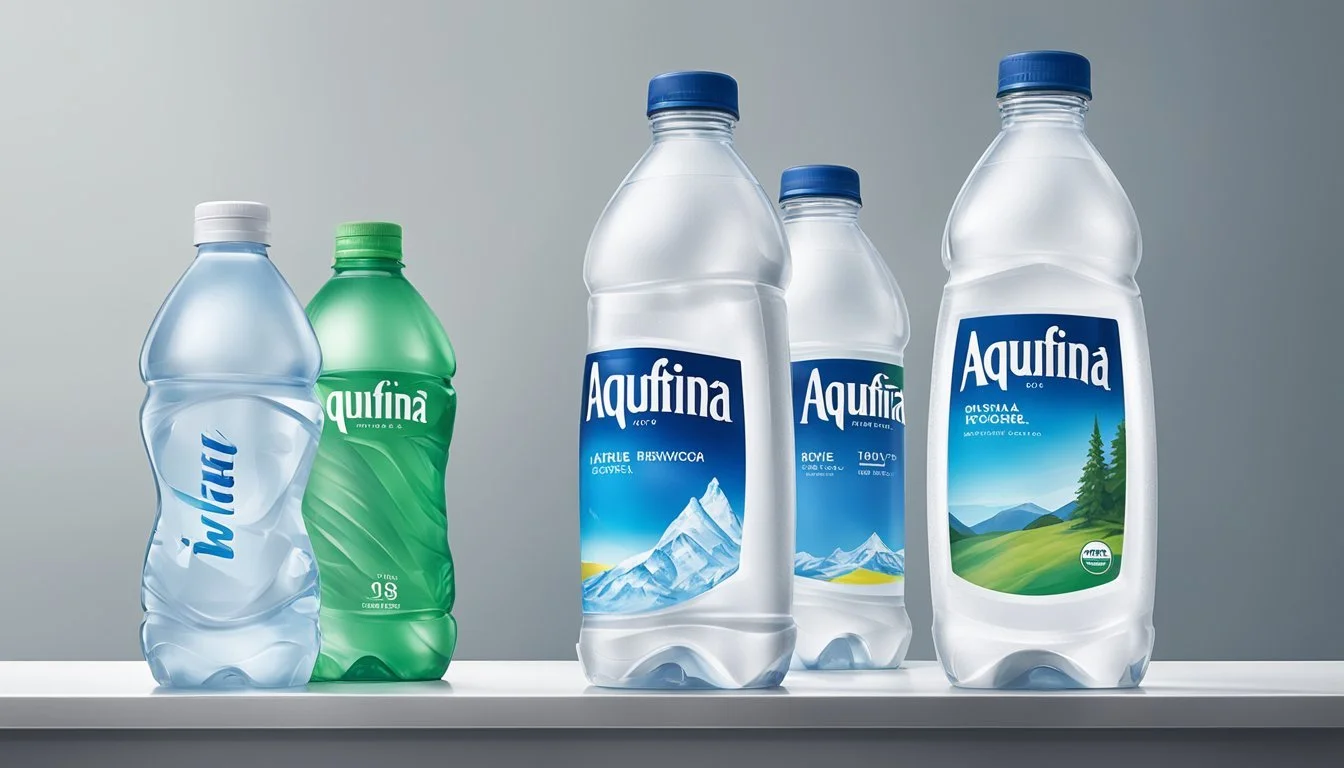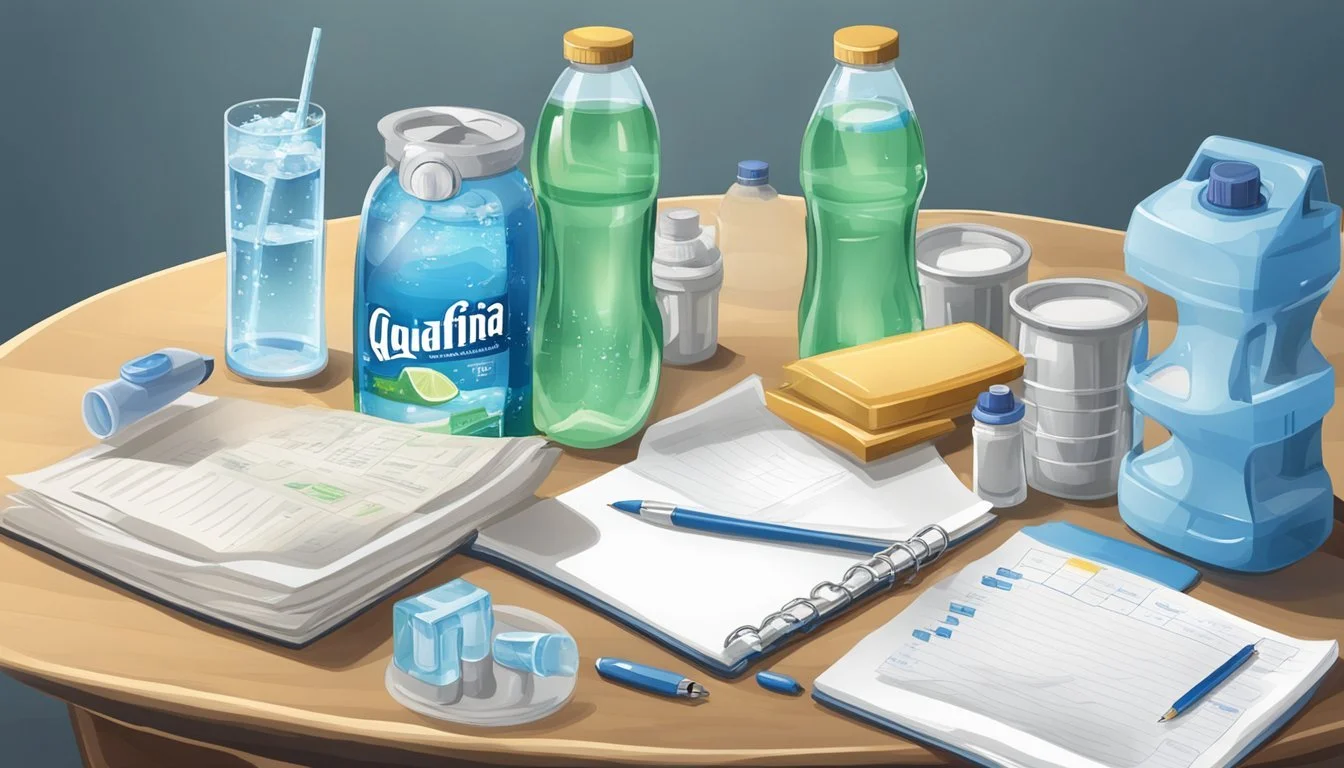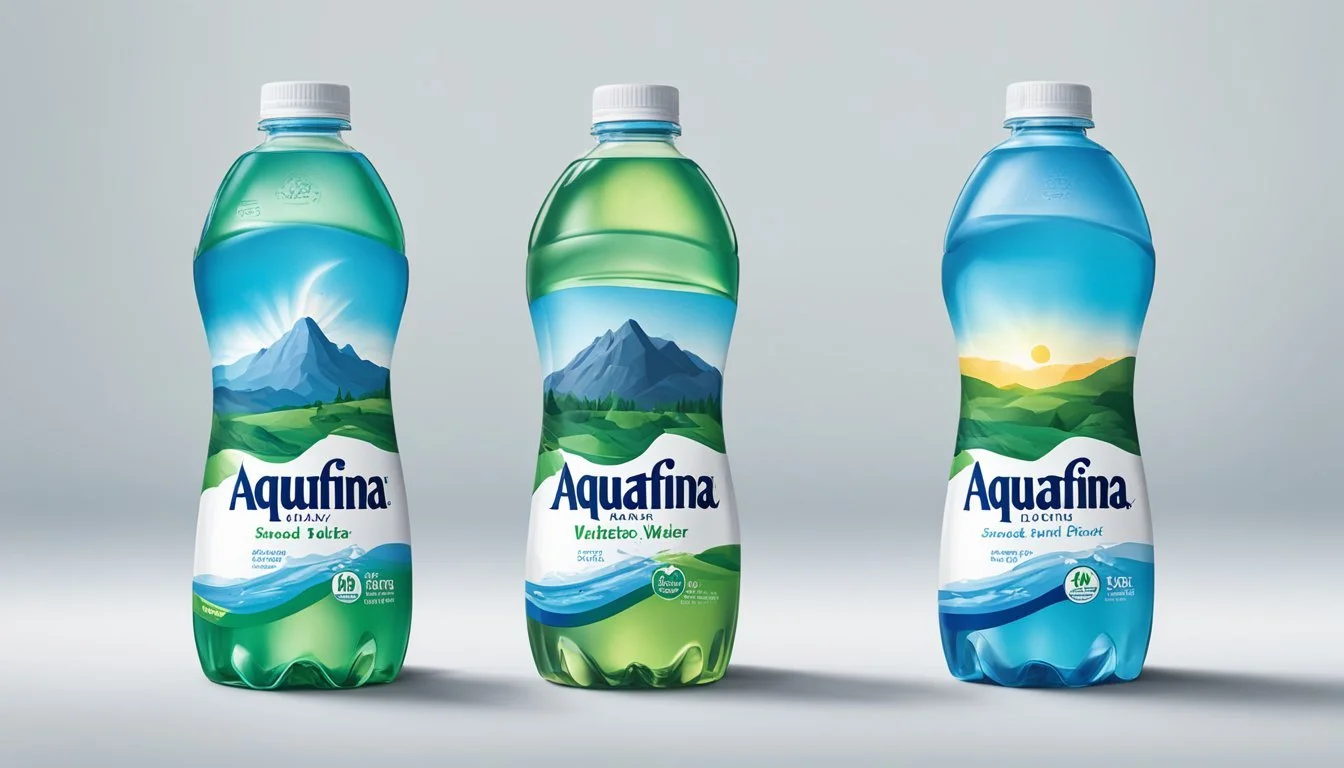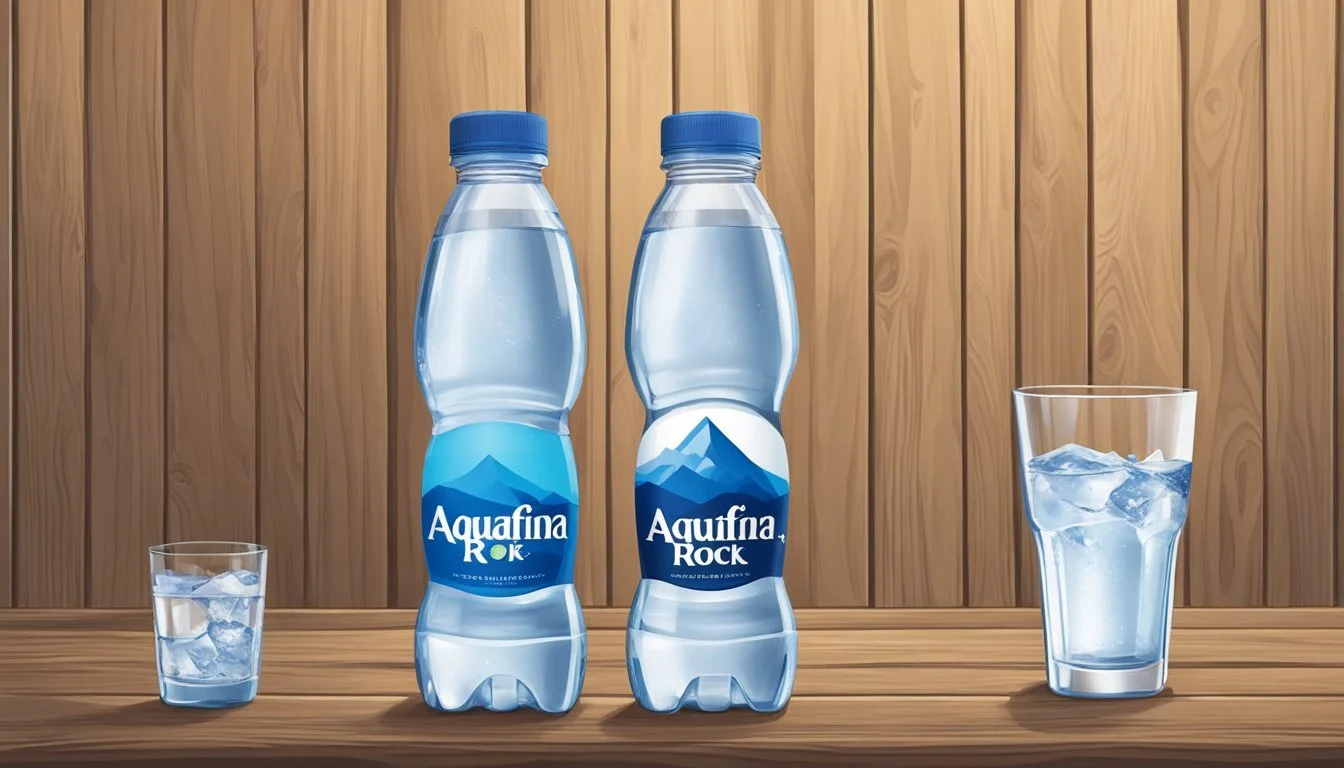Aquafina vs. Castle Rock
Comparing Quality, Taste, and Value
Choosing the right bottled water can feel overwhelming in a crowded market. Aquafina, produced by PepsiCo, is a well-known brand that boasts widespread availability and consistent quality. Castle Rock, on the other hand, sets itself apart with its commitment to sustainable practices and sourcing from pristine springs.
For those prioritizing accessibility and reliability, Aquafina offers a purified, filtered product that’s almost universally found in stores. Castle Rock's spring water appeals to eco-conscious consumers seeking natural mineral content and a smaller carbon footprint.
Between Aquafina’s convenience and Castle Rock’s environmental focus, the decision hinges on individual preferences for sustainability and taste. Readers invested in making an informed choice based on these factors will find this article beneficial.
Overview of Bottled Water Industry
The bottled water industry has seen significant growth over the past few decades, with numerous brands vying for market dominance. Understanding its history, the major brands, and changing consumer preferences provides crucial insights into this booming sector.
History and Growth
The bottled water industry began its rise in the 1970s, capitalizing on growing health consciousness. Initial skepticism about paying for water gave way to convenience and perceived safety compared to tap water.
The market expanded rapidly, with global sales surging by 73% from 2010 to 2020. This growth is underpinned by increasing urbanization, lifestyle changes, and heightened concerns about the quality of tap water.
Major Brands and Market Share
Several major brands dominate the bottled water industry. Aquafina and Dasani, both products of giant beverage companies, are extensively marketed and widely available.
Brands like Fiji and Evian are positioned as premium options, often touted for their unique sources and high mineral content. Pure Life and Smartwater also hold significant shares, leveraging their distinct processes and health-focused marketing.
In recent years, private label brands have gained traction, appealing to cost-conscious consumers and increasing their market share.
Evolving Consumer Preferences
Consumer preferences in the bottled water industry have evolved toward health and sustainability. There's a growing demand for hydration products with added minerals and electrolytes for enhanced taste and health benefits.
Environmental concerns have also driven an interest in sustainable packaging and sourcing practices. Consumers are increasingly wary of plastic waste and seek brands using recycled materials or innovative packaging.
Additionally, taste quality and purity remain pivotal factors. Brands now highlight their water sources, filtration processes, and eco-friendly initiatives to meet these evolving demands.
Quality Analysis of Aquafina and Castle Rock
Analyzing Aquafina and Castle Rock regarding their sources and purification processes, mineral content, and taste profiles can reveal distinct differences in quality and health benefits.
Source and Purification Process
Aquafina sources its water from public water supplies. It undergoes a rigorous purification process known as HydRO-7, which includes reverse osmosis, ultraviolet light, and ozone sterilization. This process ensures high purity by removing impurities and potential contaminants.
Castle Rock water, on the other hand, comes from a protected underground spring located in the pristine environments of Mount Shasta, California. It is naturally filtered through layers of volcanic rock, then it’s treated minimally to preserve natural qualities. This ensures a naturally clean source with minimal human intervention.
Mineral Content and Health Benefits
Aquafina's purification process strips the water of nearly all minerals. This results in a very low mineral content, which can lead to a neutral pH level. While it’s marketed as pure, it lacks the naturally occurring minerals that some consumers seek for health benefits.
In contrast, Castle Rock’s spring water retains its natural mineral content, including electrolytes and antioxidants. The water is slightly alkaline, which can benefit those looking to balance body pH levels. The presence of natural minerals such as calcium, magnesium, and potassium contributes to potential health benefits like improved hydration and metabolic function.
Mineral Aquafina (ppm) Castle Rock (ppm) Calcium <1 20 Magnesium <1 15 Potassium <1 5
Taste Profile
Aquafina offers a very clean and neutral taste due to its thorough purification process. The lack of minerals makes it crisp but perhaps less satisfying for those used to mineral-rich water. It's often described as smooth and without any distinct flavor.
Castle Rock water, due to its natural mineral content, presents a more complex taste profile. The slight alkalinity and presence of minerals provide a refreshing and somewhat vibrant taste. This can be more appealing to those who appreciate the subtle nuances in water flavor that come from natural sources.
Taste Comparison:
Aquafina: Smooth, neutral, very clean
Castle Rock: Refreshing, slightly alkaline, mineral-rich
The differences in source and treatment result in distinct experiences for consumers, catering to different preferences and health considerations.
Environmental and Sustainability Considerations
Aquafina and Castle Rock approach environmental and sustainability practices with different strategies. From their packaging choices to the conservation of water sources, both brands emphasize their commitment to reducing environmental impact.
Packaging and Recycling
Aquafina utilizes plastic bottles, including some made with recycled PET (polyethylene terephthalate). Their commitment to environmentally friendly packaging includes efforts to reduce plastic use and increase the recyclability of their products.
Castle Rock distinguishes itself with glass bottles, which are 100% recyclable and often preferred for their BPA-free nature. The brand also promotes boxed water as an alternative, catering to environmentally-conscious consumers.
The choice of materials highlights their efforts in minimizing the carbon footprint associated with packaging and reducing waste in landfills.
Water Source Conservation
Aquafina employs a rigorous purification process, sourcing its water from public groundwater supplies, which might contribute to lesser strain on natural sources. The brand ensures contaminants are removed, making the water safe for consumption.
Castle Rock sources its water from a pristine natural spring at the base of Mount Shasta. This water is naturally filtered through volcanic rock and carbon filters, contributing to its high mineral content. The brand emphasizes sustainable extraction practices to maintain the ecological balance and avoid depleting their water source.
Brands' Environmental Initiatives
Aquafina is part of PepsiCo's broader environmental initiatives, focusing on reducing its carbon footprint, improving water efficiency, and advocating for increased recycling programs. Various initiatives include reducing greenhouse gas emissions and collaborating on sustainability projects.
Castle Rock participates in various environmental initiatives, such as promoting biodiversity and reducing plastic pollution. They sponsor ecological preserves and invest in renewable energy sources to minimize their environmental impact.
By engaging in these initiatives, both brands aim to mitigate negative effects on the environment while promoting a more sustainable future for the bottled water industry.
Regulatory Standards and Safety
When evaluating the safety and quality of bottled water brands like Aquafina and Castle Rock, understanding regulatory standards and the effectiveness of safety measures is crucial. This section discusses how each brand complies with FDA regulations, outcomes from independent testing, and transparency in their consumer communication.
FDA Regulations and Compliance
Both Aquafina and Castle Rock adhere to the stringent FDA regulations for bottled water. The FDA mandates rigorous testing for contaminants and harmful substances, ensuring that products are safe for consumption. Aquafina, produced by PepsiCo, undergoes a HydRO-7 purification process, which effectively removes impurities.
Castle Rock emphasizes its natural spring water source, claiming high purity and natural filtration. Both brands meet the FDA's standards for microbiological, chemical, and radiological contaminants, ensuring that their water is safe to drink.
Independent Testing Results
Independent testing results provide additional assurance about the quality and safety of bottled water. Aquafina's water consistently shows it is free from harmful contaminants, such as bacteria and industrial pollutants. The seven-step purification process effectively reduces risks from various contaminants.
Castle Rock relies on third-party testing to verify the purity and mineral content of its spring water. These tests affirm the absence of harmful substances and validate claims of natural mineral content. Consumers can trust the safety and purity of both brands based on these independent results.
Transparency and Consumer Trust
Transparency is vital for consumer trust in bottled water brands. Aquafina maintains detailed quality reports and makes them accessible to the public. This openness about contaminant levels, water sources, and purification methods builds consumer confidence.
Castle Rock also emphasizes transparency, providing detailed information about its spring sources and quality control measures. By sharing comprehensive test results and maintaining open communication, Castle Rock enhances its credibility. Both brands' commitment to transparency ensures that consumers can confidently choose safe and high-quality bottled water.
Consumer Perspectives and Brand Reputation
Consumers have varied opinions on Aquafina and Castle Rock, influenced by reviews, media endorsements, and comparative rankings. Each brand has its strengths and weaknesses which are reflected in diverse feedback and evaluations.
Customer Reviews and Feedback
Aquafina often garners mixed reviews. Some consumers appreciate its purified taste and neutrality, making it a versatile choice. Many find it convenient and reliable as it's widely available. Castle Rock stands out for its crisp, refreshing flavor, reminiscent of natural spring water. This brand is perceived as premium and often mentioned in context with outdoor activities and pure refreshment.
Social media platforms like YouTube, Instagram, and Twitter feature discussions and reviews. Influencers and ordinary users regularly share their settings, where Castle Rock is lauded for its natural essence, while Aquafina maintains a steady approval for accessibility.
Media Coverage and Endorsements
Aquafina and Castle Rock both benefit from media coverage, though the focus varies. Dan Gentile from Thrillist has reviewed numerous bottled waters, often placing Aquafina in a favorable light due to its dependability. Castle Rock, meanwhile, gains endorsements from outdoor enthusiasts and celebrities like Elvis Presley, who appreciated the natural taste of spring water.
Prominent magazines and TV shows highlight the brands in various contexts. While Aquafina is frequently cited in discussions about widely available, cost-effective options, Castle Rock is celebrated for its artisanal quality. This contrast showcases different consumer priorities.
Comparative Studies and Rankings
Ranking studies from sources like TODAY and The Delite provide insight into how these brands stack up. Aquafina often ranks somewhere in the middle, praised for its neutrality but criticized for lack of distinct flavor. Castle Rock, on the other hand, frequently ranks higher for its fresh, clean taste and spring water origin.
These rankings help consumers navigate myriad options, clarifying which brands excel in categories like water taste and water flavor. Comparative analysis underscores Aquafina's broad market appeal and Castle Rock's status as a premium, niche product.
Conclusion and Final Thoughts
When examining the two bottled waters, Aquafina and Castle Rock, various aspects come to light.
Both exhibit a commitment to purity and hydration. Aquafina utilizes a 7-step HydRO-7 filtration process to enhance water purity and remove impurities. Castle Rock sources its water from natural springs, aiming for a purer, more natural hydration experience.
In terms of hydration abilities, both brands provide quality options. Consumers looking for superior hydration may appreciate Castle Rock for its natural approach, while others might lean towards Aquafina for its rigorous purification process.
Castle Rock promotes wellness through its mineral-rich content, sourced from pristine environments. This aligns with those prioritizing wellness and natural hydration. On the other hand, Aquafina’s widely available purified water caters to those who prioritize consistency and availability.
Taste preferences vary. Aquafina offers a clean, neutral taste, suitable for various palates. Castle Rock’s taste, influenced by its natural mineral content, appeals to those who enjoy a more nuanced flavor profile.
While Nestlé Pure Life was not the focus of this comparison, it is important to note that both brands strive to meet similar standards of cleanliness and hydration, offering choices in an ever-competitive bottled water market.
Selecting between Aquafina and Castle Rock ultimately comes down to individual preferences for filtration versus natural sourcing, and the desired balance of taste and purity. Both deliver on the promise of clean, refreshing water, catering to diverse hydration needs.







